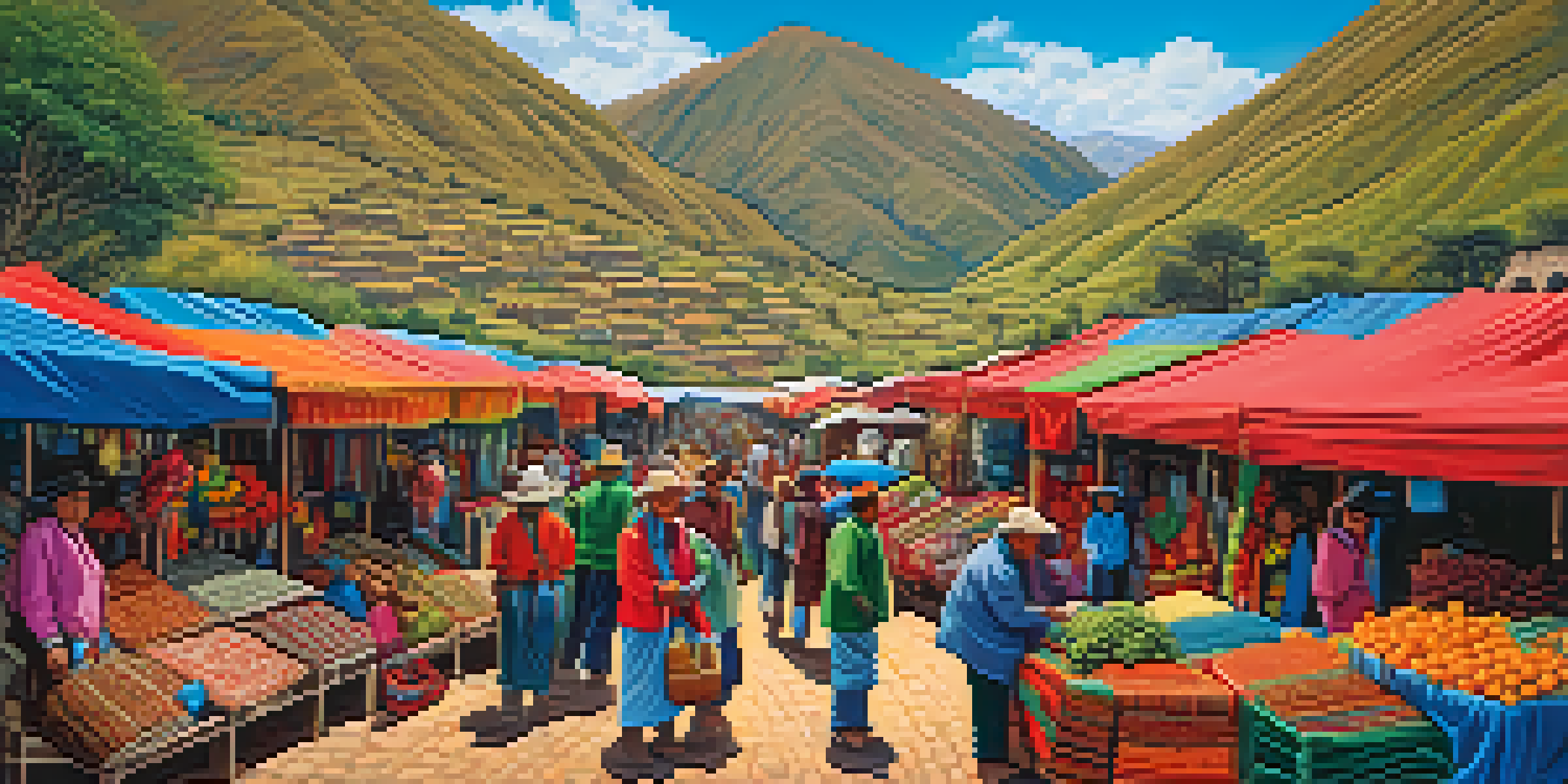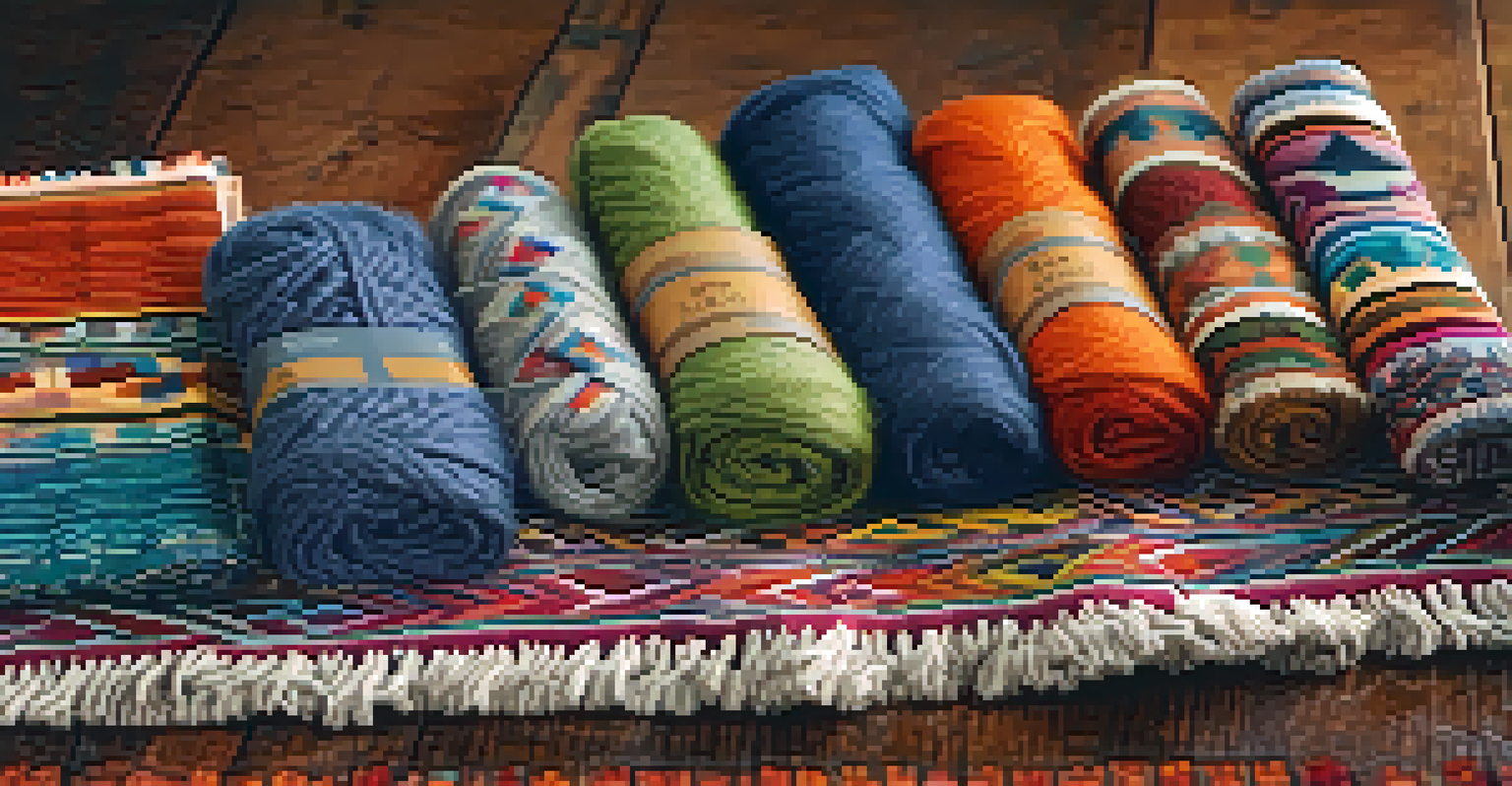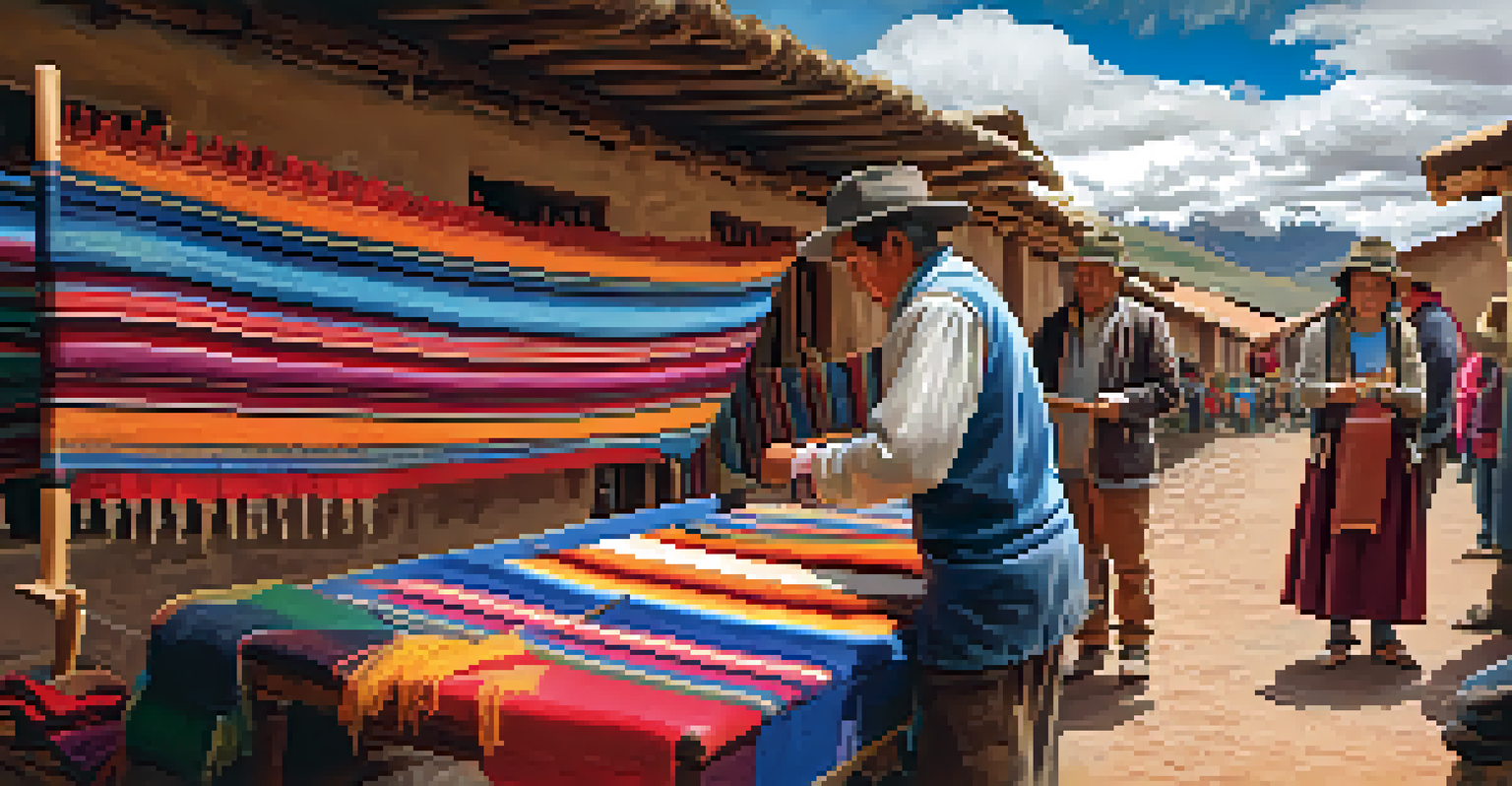Local Markets in Peru: Where to Find Authentic Textiles

Why Local Markets are Essential for Authentic Textiles
Local markets in Peru are treasure troves for authentic textiles, showcasing the rich cultural heritage of the region. Unlike mass-produced items, these textiles reflect the artistry and craftsmanship of local artisans. Each piece tells a story, often rooted in centuries-old traditions passed down through generations.
Textiles are a reflection of the culture and traditions of a people, encapsulating their history and identity in every thread.
Visiting these markets allows you to connect directly with the creators, gaining insight into their techniques and the significance of their work. This personal interaction not only enhances your shopping experience but also supports the local economy, contributing to the sustainability of their crafts.
Moreover, the vibrant colors and intricate patterns found in Peruvian textiles are a feast for the eyes. From handwoven blankets to beautifully embroidered garments, each item is unique, making it a perfect memento or gift that captures the essence of Peru.
Exploring the Best Local Markets for Textiles in Peru
When it comes to finding authentic textiles, the market in Pisac is a must-visit. Located in the Sacred Valley, this bustling marketplace is famous for its handmade textiles, vibrant colors, and friendly vendors eager to share their stories. Here, you can find everything from traditional ponchos to intricately woven bags.

Another gem is the San Pedro Market in Cusco, where locals shop alongside tourists. This market offers a wide variety of textiles, including alpaca wool products that are soft, warm, and incredibly durable. Don't hesitate to haggle a bit; it's part of the experience and often leads to a more favorable price.
Local Markets Showcase Authentic Textiles
Peru's local markets offer unique textiles that reflect the rich cultural heritage and craftsmanship of local artisans.
Lastly, the Chinchero market, held on Sundays, is known for its authentic traditional textiles directly from the Andean communities. Vendors often display their work alongside demonstrations of the weaving process, providing a deeper appreciation for the craft. Visiting these markets is not just about shopping; it's about immersing yourself in the culture.
Understanding the Art of Peruvian Textiles
Peruvian textiles are more than just fabric; they represent a deep connection to the history and identity of the Andean people. The techniques used in weaving have been refined over thousands of years, often incorporating symbols and patterns that hold particular meanings. For instance, certain designs may reflect agricultural practices or spiritual beliefs.
The best way to find yourself is to lose yourself in the service of others.
The materials used, such as alpaca wool and natural dyes from plants, add to the uniqueness of each piece. Alpaca wool is prized for its softness and warmth, making it an ideal choice for clothing and blankets. The vibrant colors achieved through natural dyes are not only beautiful but also environmentally friendly.
Understanding these aspects enhances your appreciation for the textiles you encounter, turning a simple purchase into a meaningful connection to Peruvian culture. It’s like bringing a piece of their history home with you.
Tips for Shopping at Local Markets in Peru
Shopping at local markets can be an exhilarating experience, but a few tips can enhance your adventure. First, take the time to explore different stalls and compare items. You'll often find variations in quality and price, allowing you to make informed choices.
Don’t be afraid to engage with the vendors; they often have fascinating stories about their crafts and can provide valuable insights. A friendly chat can go a long way in making your shopping experience enjoyable and memorable. Plus, vendors appreciate when customers show genuine interest in their work.
Shopping Supports Local Communities
Purchasing textiles from these markets not only provides a meaningful connection to Peruvian culture but also supports ethical and sustainable practices that benefit local families.
Lastly, remember to bargain! Haggling is a common practice in Peruvian markets. Approach it with a good-natured attitude, and you might walk away with not only a fantastic deal but also a new friend.
Supporting Ethical and Sustainable Practices
When you purchase textiles from local markets, you’re not just buying a product; you’re supporting ethical and sustainable practices. Many artisans use traditional methods that are environmentally friendly and help preserve their cultural heritage. By choosing to buy from these markets, you're contributing to the livelihoods of local families.
Ethical shopping also means being mindful of the impact your purchases have on communities. Look for vendors who are transparent about their practices and directly support local artisans. This ensures that your money goes back to the community, helping sustain their craft and way of life.
In essence, shopping at local markets allows you to be a conscious consumer, making choices that benefit both you and the artisans. It's a win-win situation that fosters a deeper connection between you and the culture.
The Role of Textiles in Peruvian Culture
Textiles play a vital role in Peruvian culture, serving both practical and ceremonial purposes. Historically, textiles have been used for clothing, shelter, and trade, but they also hold significant cultural value. Many communities have specific garments that are worn during festivals or important life events, symbolizing their identity.
Different regions have distinct styles and techniques, showcasing the diversity of Peru’s cultural landscape. For example, the coastal regions might focus on lighter fabrics, while the highlands traditionally use thicker materials for warmth. This variety reflects the geographical and climatic differences across the country.
Textiles Reflect Cultural Significance
In Peru, textiles serve practical and ceremonial purposes, representing the identity and history of various communities across the country.
Understanding this cultural significance adds depth to your appreciation of the textiles you encounter. It’s not just fabric; it’s a representation of a community’s history, values, and artistic expression.
Bringing a Piece of Peru Home
Once you've explored the markets and selected your favorite pieces, it’s time to think about how to bring a slice of Peru home with you. Each textile you purchase carries a story, and sharing that story with others can extend the cultural experience beyond your travels. Whether it’s a beautiful scarf or a vibrant rug, these items can spark conversations and create connections.
Consider how these items can fit into your home or wardrobe. Perhaps a handwoven blanket becomes a centerpiece in your living room, or a colorful bag adds flair to your daily routine. Each time you use or display your purchase, you’ll be reminded of your adventures in Peru.

Lastly, don’t forget to share your experiences on social media! Documenting your journey not only helps preserve your memories but also encourages others to explore the beauty of local markets in Peru. Who knows? You might inspire someone else to embark on their own textile adventure!